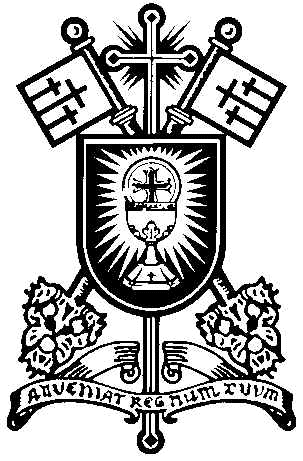 The Liberal Catholic Church
The Liberal Catholic Church

A tri-annual magazine exploring the deeper aspects of religious thought,
experience and practice in the world today
![]()
|
|
|
The Master Jesus Geoffrey Hodson The article below was taken from the book Clairvoyant Investigations of Christian Origins and Ceremonial. The Master Jesus undertook in Palestine, about 100 BC, the dual task of a visiting Arhat and completely Gnostic Essene who sought to liberate degraded Hebraism of the time and its self-seeking priests by spreading the light of pure Gnosticism throughout the land including the attainment of Adeptship and beyond. "Be ye therefore perfect, even as your Father which is in heaven is perfect." (Matt. 5:48) In the first of these tasks he failed and surrendered his physical life at the hands of an almost barbarian populace driven on by the organised hierarchy of the priests. Nevertheless, he very greatly inspired and helped all fellow countrymen and women who responded to his teaching, observed and participated in his miracles, and thus made progress upon the spiritual path. It is the memory and records of these various experiences that are partly and in some places accurately recorded in the New Testament, Canonical and Apochryphal. The priestly power, supported by government officials proved too strong. He can be said to have failed in the more public purpose of his mission while very greatly helping forward the spiritual unfoldment of many people and therefore of the human race. Jesus was an extraordinarily beautiful character and compassionate human being. He was prepared by his initiations into the Egyptian Mysteries - the flight is erroneous, or rather a veil over this truth - and did many times confound orthodoxy and the priesthood of decadent Hebraism of the time. He drew fellow students around him and took some of them (the disciples) into intimate knowledge of the Mysteries. There were many more than twelve. The Gospels are in no sense an orderly history of his Palestine life. He said many of those things and he did most of the actions, but not in the sequence given. Much more esoteric mystery teaching was given to chosen groups, but of course these were never intended to be recorded. St. Paul came nearest of all to revealing his more mystical utterances. The enmity of the priesthood as revealed in the Gospels was a fact and a very unfortunate one since it brought his life to a premature close - unfortunate indeed, for humanity's sake. There are many parts of the Gospels that are true descriptions of words he spoke, places he visited, miracles he performed and his choice of disciples, although this last subject matter is very insufficiently described. He taught his disciples the deeper truth, Gnostic, Essene and of course "theosophic" in the full meaning of that word. He taught almost entirely in the open air and drew his similes and illustrations from the every-day life of the people, as the Gospel stories tell He was a very great personage and for a few years a vehicle for the Logoic Atma - an Avatar. I believe that it was about 100 BC when he walked and travelled up and down Palestine. Jesus was rightly named "The Galilean" since much of his activity centred round the sea of Galilee, though he travelled also throughout Judea - safely in the country outside Jerusalem, but not so securely within that city and its nearer surroundings. His Death I think he would have saved himself from the stoning - by disappearing, for example - had not an early stone struck him on the forehead and rendered him senseless physically. The rest followed in all its tragedy, leaving much of the work he was to do to a later stage. His body was submitted to indignities that his disciples could not prevent and many of them were ill-treated grievously because of their association with him. There were women, but they advisedly withdrew when the brutalities began. The Jesus of the Gospels is a blend of the real personage and allegorical personifications of Arhats, their missions and advancement to adeptship. The Gospels are not accurate, especially concerning the sequence of events and sometimes where an event occurred. The authors simply took recollected accounts and stories and incidents and teachings and miracles and did their best to put them together sequentially. Hence there are many mistakes. Somewhat as described in the Gospels, he did reappear to his disciples, chiefly in order to continue the more occult and spiritual aspects of his ministry that included leading disciples to the initiations on the spiritual path and instructing them all in the work they could do for humanity in his name. They used his methods and his teachings, many of which had become, as it were, treasured and precious possessions. Thereafter, in due course, his supernatural visits came to an end. My humble belief is - though I cannot adduce any proofs - that he did in fact reincarnate as Appolonius of Tyana, in which life he much resembled the Jesus incarnation. I cannot say much about his life before I was privileged to meet him, but intuitively am convinced that he did visit the various Essene and Ebionite communities wherein he was of course a great source of enlightenment and instruction by words and example. Since my egoic memory does not extend to that period in his life I cannot say that he is identifiable with the named "Teacher of Righteousness" of the Qumran community even though such certainly would be the office which he filled wherever he went. This does not exclude, however,- and must not do so - the possibility, likelihood, indeed, that the Qumran Community also possessed an advanced Teacher. Instinctively, for what it may be worth, I find myself inclined to doubt the identification.
|
|